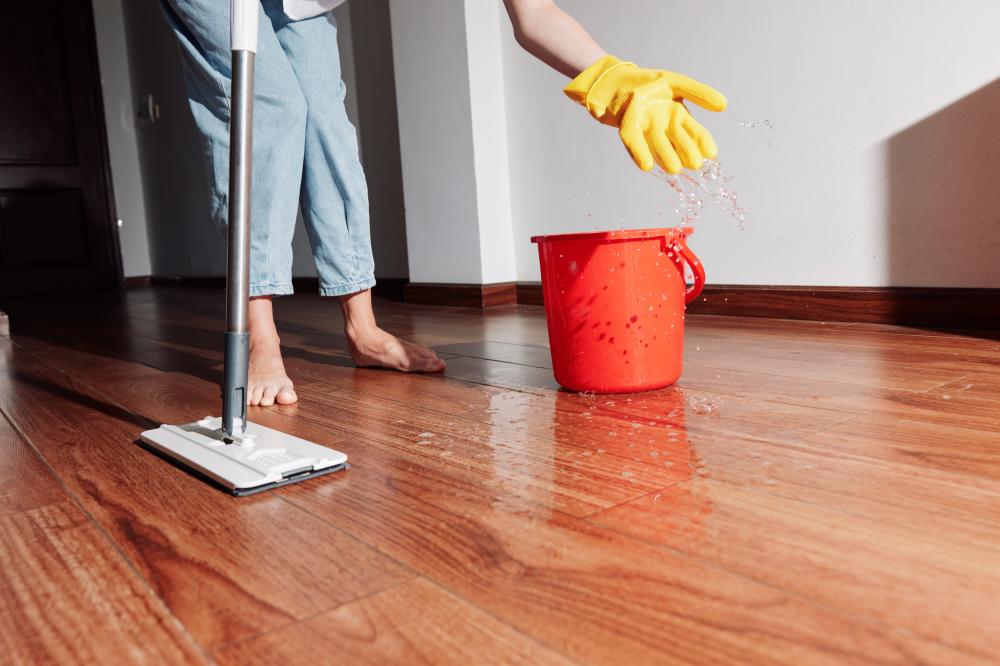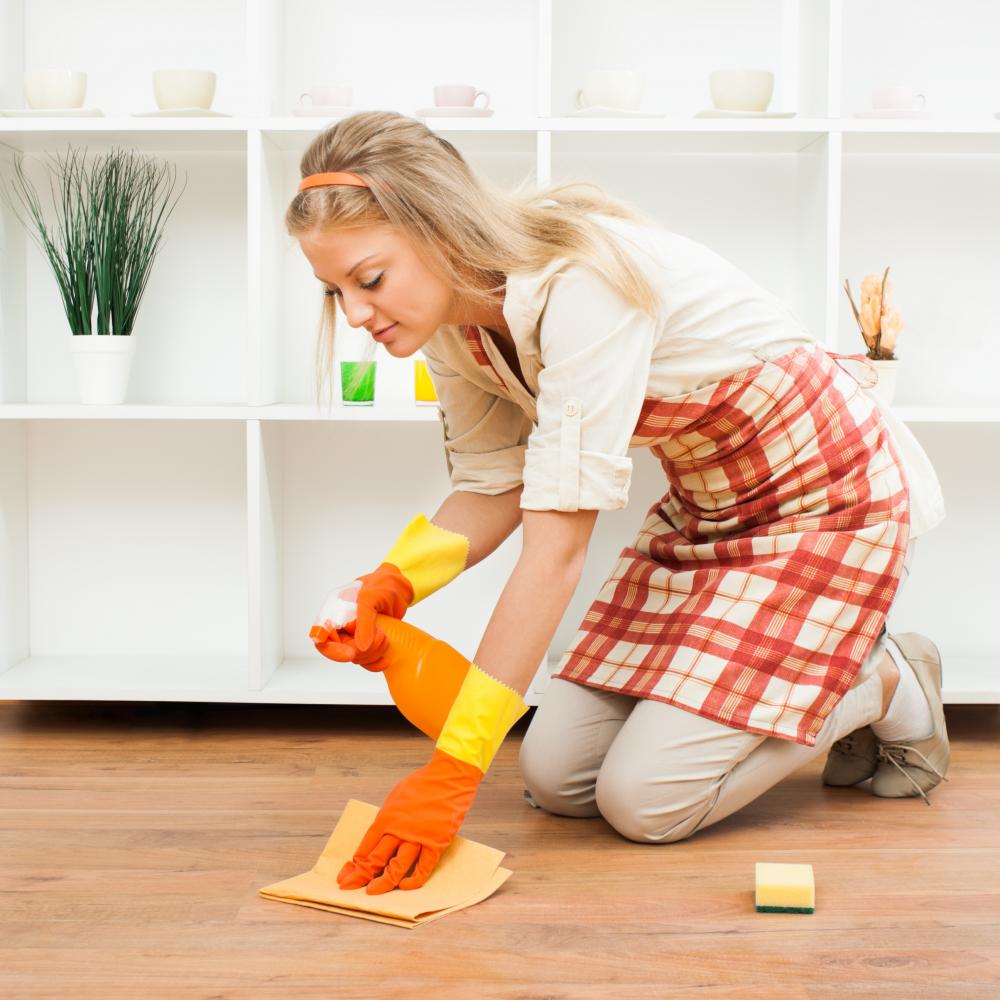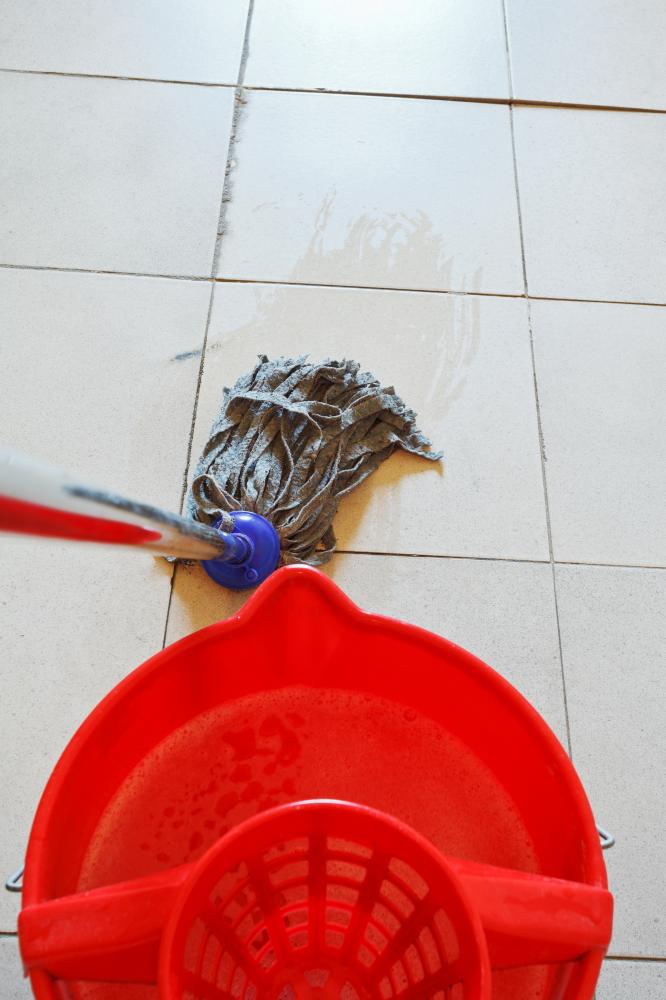
Cleaning Hardwood Floors
At Fresh Flare Cleaning Services, we appreciate the elegance of hardwood floors and the care they demand. Regular vacuuming and sweeping keep everyday dirt and dust at bay. For deeper cleaning, damp mop using a gentle cleaner specifically designed for wood surfaces. Avoid excessive moisture as it can lead to warping. This is a critical aspect of maintaining the beauty and longevity of your hardwood floors.
One practice we recommend is using a microfiber mop. Its gentle texture reduces the risk of scratching. We advise against using vinegar-based solutions, as acidity can damage the wood’s finish over time. Instead, a solution of diluted mild soap works well. Our clients find this method effective for both routine and more intensive cleaning sessions.
Tile Floor Cleaning Practices
Tile flooring offers durability and a range of style options, but it does require specific cleaning techniques. Regular sweeping or vacuuming removes loose dirt and prevents it from settling into the grout. When mopping, use a tile-friendly cleaning solution to maintain the tile’s sheen. It’s crucial to avoid overly harsh chemicals that might discolor the tiles over time.
Grout can be a challenge. To keep it clean, we suggest a paste of baking soda and water applied with a small brush. Let it sit for a few minutes before rinsing. For stubborn stains, consider a commercial grout cleaner as a last resort. Consistent care means your tile will remain a vibrant feature of your space.
Hardwood vs. Tile Maintenance
When comparing Hardwood vs. Tile: Best Cleaning Practices for Each Surface, it’s essential to consider maintenance demands. Hardwood floors benefit from regular but gentle care. They’re susceptible to scratches and water damage, requiring a mindful cleaning approach. We suggest using felt pads under furniture and area rugs in high-traffic zones.
Alternatively, tile floors offer more resilience against moisture and scratches. This makes them ideal for kitchens and bathrooms. While easier to manage in terms of spills, tile requires attention to grout maintenance. Fresh Flare Cleaning Services often advises clients to establish a routine that involves consistent sweeping and periodic deep cleaning.
Choosing the Right Products
Selecting the appropriate cleaning products is crucial in Hardwood vs. Tile: Best Cleaning Practices for Each Surface. We often recommend natural-based products designed specifically for each flooring type. For hardwood, using pH-neutral cleaners prevents damage to the wood’s surface. This helps maintain its natural luster.
Conversely, tile cleaning products should avoid acidic components, which can erode grout over time. A gentle, all-purpose cleaner is often sufficient for regular cleaning. At Fresh Flare, our team is equipped with industry-approved products guaranteeing exceptional results while preserving the integrity of your floors.
Tips for Long-Lasting Flooring
A few proactive measures can significantly extend the life of your floors. Doormats at entry points trap dirt before it reaches your flooring. Implement a no-shoes policy indoors to prevent scratches and dirt accumulation. For hardwood, this reduces wear and tear significantly.
The right cleaning tools are equally important. Using a vacuum with a soft brush attachment protects surfaces from scratches. For tiles, a mop with a fine-fiber head maintains cleanliness without wearing down the material. Our Fresh Flare team finds that these minor adjustments make a noticeable difference over time.

Daily Maintenance for Hardwood Floors
Maintaining the elegance of hardwood floors requires consistent care. Start by sweeping or vacuuming daily to eliminate dust and debris. Utilize a vacuum with a floor-brush attachment to prevent scratches. Avoid vacuums with beater bars as they can damage the surface.
For quick touch-ups, a dry microfiber mop works wonders. It captures finer particles without the need for chemicals. This daily routine preserves the natural beauty and minimizes wear over time. Remember, adopting these hardwood floor cleaning tips enhances durability and appearance.
Avoid Common Cleaning Mistakes
Water and Hardwood Don't MixMany believe water cleans all surfaces, but excessive moisture harms hardwood. Even the slightest overuse can lead to swelling and warping. For the best results, ensure your mop is slightly damp, never wet.
Stay Clear of Vinegar and AmmoniaThough often recommended for cleaning, vinegar and ammonia can etch and discolor hardwood floors. Always choose products specifically designed for wood. These hardwood floor cleaning tips help maintain your floor's finish.
Choosing the Right Cleaners
Opt for products designed for hardwood. Many popular cleaners aren't wood-friendly and may damage the finish over time. Select a high-quality cleaner to preserve the floor's integrity. Consider Bona Hardwood Floor Cleaner as a reliable option.
Additionally, professional-grade options, like Basic Coatings Squeaky Clean, offer effective solutions. They handle dirt without compromising the floor's finish. Using these products regularly extends your hardwood floor's lifespan.
Preventing Damage and Scuffs
To safeguard your floors, consider using protective pads under furniture. Rugs in high-traffic areas also provide a buffer against scratches. Such simple measures prevent marks and maintain your floor's pristine condition.
Keep the exterior elements at bay with door mats. They catch dirt, sand, or moisture before it reaches your floors. Implementing these hardwood floor cleaning tips ensures minimal wear and tear.
Handling Pet Accidents on Hardwood
Pet stains can be challenging. Address accidents immediately with a hardwood-safe cleaner. Blot the area to absorb moisture, then apply a hardwood cleaner. This prevents stains from setting in and causing lasting damage.
If accidents are frequent, consider adding a protective sealant to your floors. These proactive hardwood floor cleaning tips will help manage unavoidable pet mishaps.
Ceramic Tile Care
Maintaining ceramic tiles is essential for longevity. Regular dust mopping or vacuuming can prevent dirt from accumulating. When it’s time for a deeper clean, use an all-purpose, low VOC cleaner suitable for tiles. Avoid harsh chemicals as they can damage both tile and grout. A soft mop or sponge works wonders here.
For those stubborn spots, especially in bathrooms, a multipurpose spray cleaner is effective. It deals with soap scum and hard water deposits. After cleaning, always rinse with fresh water and dry thoroughly. This method keeps ceramic tiles not only clean but also maintains their sheen.
Remember, unglazed tiles demand a bit extra care. Use concentrated tile cleaners with a neutral pH. This ensures that grease and spills don’t leave lasting marks. Always ensure your cleaner is compatible with your grout to maintain uniform color and texture.
Importance of Sealing Tile
Sealing tiles, especially those made of natural stone, is crucial. It creates a protective barrier against dirt and spills. However, not all tiles need sealing. For instance, glazed ceramic tiles don’t require it, but the grout still benefits from a good seal. Sealing grout helps in preserving its original hue and prevents discoloration over time.
Applying a sealer isn’t too complicated. Ensure the tile is clean and free of any residue. Then, apply an even layer and let it dry completely. Typically, drying takes around 24 hours. Reapply sealer every couple of years to maintain protection. Regular maintenance extends the life of your tiles significantly.
Grout Care and Maintenance
Grout often discolors faster than tiles. Sealing helps but routine cleaning is vital too. Use a household cleaner for daily maintenance. For heavy-duty cleaning, a specialized tile and grout cleaner is best. This effectively removes buildup like grease or soap scum without harming the grout.
If your grout has lost its original color, consider a grout stain. These epoxy-based products provide a new, permanent color. Staining eliminates the need for sealing but requires a thorough initial clean to ensure adherence.
Grout is more than just aesthetic; it's integral to the tile installation. Proper care ensures both beauty and function are preserved for years.
Avoiding Common Pitfalls
Many overlook the importance of proper tile floor maintenance. It's easy to think of tiles as indestructible, but they do require attention. Avoid using harsh chemicals, which can damage both tiles and sealants. Stick to mild soap and water or cleaners specifically designed for tile surfaces.
Another common mistake is ignoring the edges. Water can seep in and cause damage. Ensure proper caulking or edge sealing to prevent such issues. Maintenance is routine but straightforward. With consistent care, tiles can remain pristine for decades.
Lastly, don’t skip the drying phase. After cleaning or sealing, tiles need adequate time to dry. Walking on them too soon can lead to uneven finishes. This simple step makes a big difference in the final look and longevity.
Personal Insights and Experiences
At Fresh Flare Cleaning Services, we’ve seen firsthand how proper maintenance can transform tile floors. Many clients are amazed at the difference a regular cleaning routine makes. We often recommend starting with a detailed Tile floor maintenance guide for best results.
Each home is unique, and tiles can reflect a homeowner’s personality when cared for appropriately. Engaging in these maintenance practices not only preserves aesthetic appeal but also instills a sense of pride in one’s living space.
Our team ensures every client understands their specific tile needs. From choosing the right products to demonstrating technique, we guide them through the process. The result is floors that not only look good but bring lasting satisfaction.

Is tile easier to clean than wood?
Tile flooring is generally easier to clean than wood, primarily due to its resilience against moisture and stains. In kitchens and bathrooms, where spills are common, tile can be quickly wiped without much concern for water damage. However, maintaining the grout is essential because it can collect dirt and stains over time. For wood, cleaning involves a bit more caution. You must avoid excessive moisture to prevent warping and use specific cleaners to protect the finish. At Fresh Flare Cleaning Services, we emphasize the unique requirements of each type to ensure their longevity and beauty. If you're thinking about which surface is best for your lifestyle, consider how much time you can devote to maintaining each type.
What is the best way to clean hardwood and tile floors?
For hardwood floors, we recommend a gentle approach. Start by sweeping or vacuuming with a soft brush attachment to remove dirt and debris. Use a damp microfiber mop with a pH-neutral cleaner specifically for wood. Be mindful of moisture, as too much can damage the wood. Tile floors, on the other hand, can handle a bit more elbow grease. Regular sweeping or vacuuming helps prevent dirt from settling into the grout. For a deeper clean, use a tile-friendly cleaner. Remember, the key to beautiful floors is not just about using the right products but also about consistency in your cleaning routine. At Fresh Flare Cleaning Services, we can guide you through setting up a maintenance schedule that works for your needs.
Why not use Bona on hardwood floors?
Bona is actually a popular choice for hardwood floors and many users find it effective in maintaining the wood’s natural luster. It's specifically formulated to be gentle on wood finishes, helping to prevent the sort of damage vinegar or ammonia might cause. However, some individuals may seek alternatives if they have specific allergies or sensitivities to the ingredients in Bona. At Fresh Flare, we believe in using products that are safe for both our clients and their floors, which is why our team is always happy to discuss product choices and make recommendations based on your needs. If you've had experience with Bona and have additional insights, we'd love to hear about them—feel free to reach out!
What do you put between tile and hardwood floors?
When transitioning between tile and hardwood floors, a transition strip or threshold is often used. These strips are available in various materials, such as wood, metal, or vinyl, and they serve to even out the height difference between the two surfaces while providing a visually appealing transition. At Fresh Flare, we notice that clients often focus on aesthetics in such transitions. The choice of material and style can enhance the overall look of your home. Ensuring proper installation is crucial to avoid tripping hazards or damaging either flooring type. If you’re unsure about which transition is best for your space, consulting a flooring professional can provide clarity and confidence in your decision.
#### Resources for Cleaning and Maintaining Hardwood and Tile Floors- U.S. Environmental Protection Agency (EPA) – The EPA provides guidance on environmentally safe and non-toxic cleaning products, which can be beneficial when choosing cleaners for hardwood and tile floors.
- U.S. Consumer Product Safety Commission (CPSC) – Offers safety information about cleaning products and appliances that are useful for maintaining home flooring safely.
- National Park Service (NPS) – The NPS offers guidelines on the care and maintenance of historic wood flooring, which can apply to modern hardwood care as well.
- Agency for Healthcare Research and Quality (AHRQ) – Although focused on a different domain, AHRQ provides resources on indoor environmental quality, which can guide healthier cleaning practices.
- U.S. Department of Energy (DOE) – Provides information on energy-efficient appliances, including vacuum cleaners, which are crucial for maintaining flooring.




